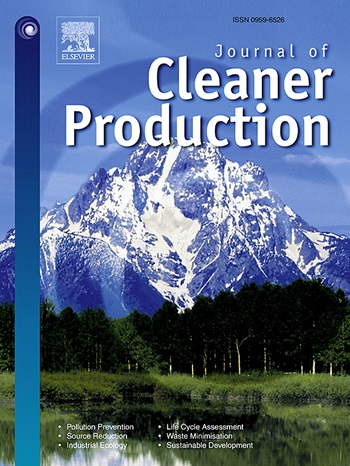电子废塑料回收利用成吸附剂的二次吸附
IF 10
1区 环境科学与生态学
Q1 ENGINEERING, ENVIRONMENTAL
引用次数: 0
摘要
回收和利用电子废物(电子废物)塑料提出了重大挑战。介绍了一种通过超交联和偕胺肟功能化将废ABS塑料转化为高效吸附剂ABS- hcp -am的新策略。所得的ABS-HCP-am具有丰富的孔结构和官能团,增强了其吸附能力。ABS-HCP-am可以通过静电相互作用、阳离子-π相互作用、π-π堆积等方式有效吸附Cr(Ⅵ)和各种有机污染物。ABS-HCP-am-2对铬(Ⅵ)、亚甲基蓝(MB)、结晶紫(CV)、罗丹明B (RhB)和盐酸四环素(TH)的吸附量分别为140.6、594.6、118.0、61.0和40.6 mg/g。ABS-HCP-am-2还能将高毒性Cr(Ⅵ)还原为毒性较低的Cr(Ⅲ),还原率高达61.2%。此外,在初始吸附Cr(Ⅵ)后,ABS-HCP-am对MB、CV、RhB和TH保持二次吸附。吸附后的Cr在二次吸附过程中也可作为RhB的新吸附位点。ABS-HCP-am提供了一种很有前途的回收和利用电子废塑料的方法。本文章由计算机程序翻译,如有差异,请以英文原文为准。

Recycling and utilization of electronic waste plastic into adsorbent with secondary adsorption
Recycling and utilization of electronic waste (e-waste) plastics present significant challenges. This study introduces a novel strategy for transforming waste acrylonitrile-butadiene-styrene (ABS) plastic into an efficient adsorbent (ABS-HCP-am) through hyper-cross-linking and amidoxime-functionalization. The resulting ABS-HCP-am exhibits rich pore structures and functional groups that enhance its adsorption capabilities. ABS-HCP-am can effectively adsorb Cr(Ⅵ) and various organic pollutants through electrostatic interaction, cation-π interaction, and π-π stacking. The adsorption capacities of ABS-HCP-am-2 for Cr(Ⅵ), methylene blue (MB), crystal violet (CV), rhodamine B (RhB), and tetracycline hydrochloride (TH) were 140.6, 594.6, 118.0, 61.0, and 40.6 mg/g, respectively. ABS-HCP-am-2 can also reduce highly toxic Cr(Ⅵ) to less toxic Cr(Ⅲ) by up to 61.2 %. Furthermore, after the initial adsorption of Cr(Ⅵ), ABS-HCP-am retains secondary adsorption for MB, CV, RhB, and TH. The adsorbed Cr can also serve as a new adsorption site for RhB during secondary adsorption. ABS-HCP-am offers a promising method to recycle and utilize e-waste plastics.
求助全文
通过发布文献求助,成功后即可免费获取论文全文。
去求助
来源期刊

Journal of Cleaner Production
环境科学-工程:环境
CiteScore
20.40
自引率
9.00%
发文量
4720
审稿时长
111 days
期刊介绍:
The Journal of Cleaner Production is an international, transdisciplinary journal that addresses and discusses theoretical and practical Cleaner Production, Environmental, and Sustainability issues. It aims to help societies become more sustainable by focusing on the concept of 'Cleaner Production', which aims at preventing waste production and increasing efficiencies in energy, water, resources, and human capital use. The journal serves as a platform for corporations, governments, education institutions, regions, and societies to engage in discussions and research related to Cleaner Production, environmental, and sustainability practices.
 求助内容:
求助内容: 应助结果提醒方式:
应助结果提醒方式:


